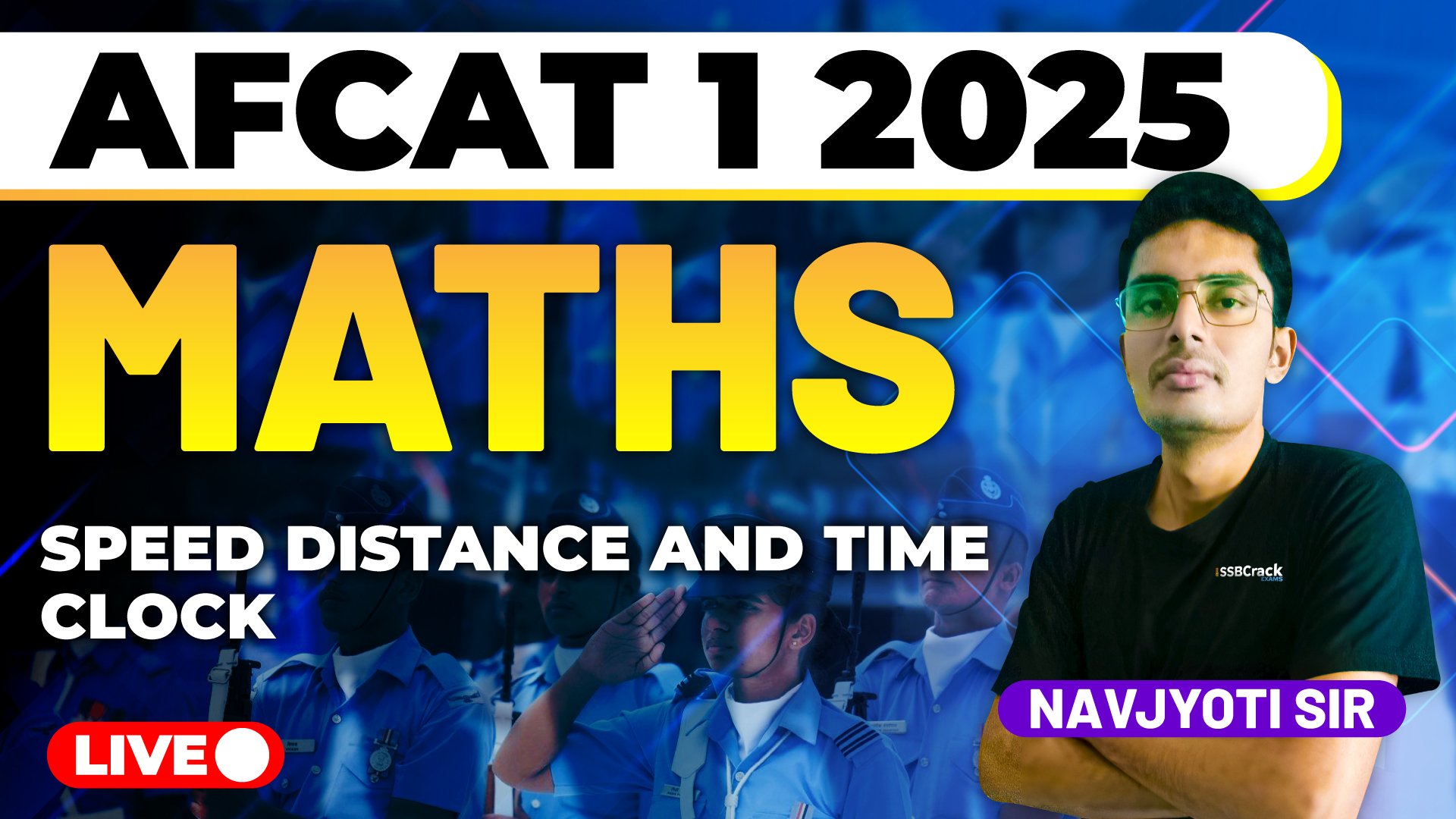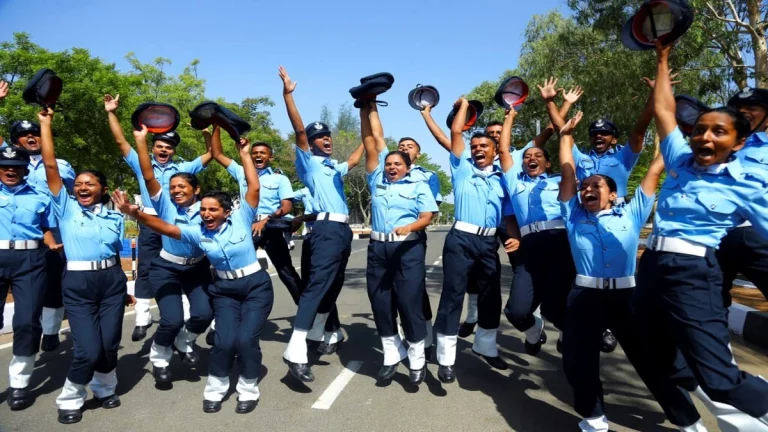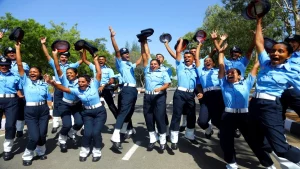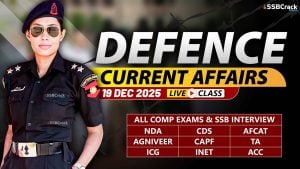In preparation for the AFCAT Numerical Ability section, a recent class covered essential topics on Speed, Distance, and Time, along with Clocks. These topics form a significant part of the exam and are highly scoring if you grasp their core principles and practice diligently. This blog will provide an overview of the concepts discussed in class, including practical applications, and share strategies to prepare effectively for this part of the AFCAT exam.
Key Concepts in Speed, Distance, and Time
Speed and Units:
- The fundamental relationship between speed, distance, and time is straightforward, yet understanding this connection is crucial for solving more complex problems.
- Recognizing and converting units (e.g., from kilometers per hour to meters per second) ensures accuracy, as misinterpreting units can lead to incorrect answers.
Average Speed:
- Average speed is often misunderstood. Unlike simple speed calculations, it involves total distance covered over total time taken and is especially relevant when different segments are covered at varying speeds.
- Problems with average speed commonly involve real-world scenarios like traveling from one city to another with varying speeds, making it essential to focus on the overall journey rather than individual segments.
Time to Cross:
- This concept is often applied to scenarios where two objects, like trains or cars, pass each other. The approach involves understanding their combined speeds and the total distance they must cover to cross each other.
- These problems are common in AFCAT exams, so practicing these scenarios can be highly beneficial.
Relative Speed:
- Relative speed deals with the rate at which two moving objects approach or distance themselves from each other. When they move in opposite directions, their speeds add up; when moving in the same direction, you calculate the difference.
- Relative speed is also used in calculating how quickly two trains moving in opposite directions pass each other, or the time it takes for one vehicle to overtake another.
Boats and Streams:
- In this topic, problems revolve around calculating effective speed when moving with or against the flow of water. When a boat moves downstream, its speed increases due to the water’s flow; upstream, its speed decreases.
- This is an important area to focus on, as boat and stream problems are frequently included in AFCAT exams.
Key Concepts in Clocks
Angles Described by Hands of a Clock:
- Hour Hand: The hour hand covers a specific angle in an hour and an even smaller angle per minute. This understanding is critical in problems where the angle of the hour hand needs to be determined.
- Minute Hand: The minute hand moves at a different rate than the hour hand, covering a set angle per minute. Questions often focus on calculating this angle over a specific duration.
Angle Between Minute and Hour Hand:
- Calculating the angle between the minute and hour hand is one of the most commonly asked questions in clock-related problems. Knowing the difference in the speeds of the hour and minute hands, as well as the distance they cover, is essential to accurately finding this angle.
Coincidence of Hour and Minute Hands:
- Another classic clock question is determining how often the hour and minute hands coincide in a day. Understanding this concept not only prepares you for such questions but also strengthens your conceptual clarity regarding the movements of the clock hands.
Practical Problem-Solving Tips for Speed, Distance, Time, and Clocks
Break Down Complex Problems:
- Complex problems often combine multiple concepts, such as calculating relative speed along with average speed or mixing up-speed and down-speed scenarios in boats and streams. Breaking them down into simpler parts, focusing on one element at a time, makes these problems more approachable.
Memorize Key Relationships and Approximations:
- Memorizing basic relationships, like speed-distance-time conversions and angles covered by clock hands, allows for quick recall, which is invaluable in a timed exam like AFCAT.
- Approximations can also be useful, especially in cases where precise values aren’t required.
Time-Based Practice:
- Practice with a timer to simulate exam conditions. Work on reducing the time you take for each question, and try to maintain accuracy under timed conditions.
Consistent Revision:
- Concepts in Speed, Distance, Time, and Clocks are interrelated, so revising them regularly is essential. Even if you’ve mastered one aspect, revisiting it ensures that you don’t forget the basics while focusing on complex problem types.
Practice Previous Years’ Questions:
- Familiarize yourself with the question patterns from past AFCAT exams. This will give you insights into the types of questions that frequently appear, helping you prioritize topics and manage your time effectively.
Strategies to Prepare for the AFCAT Exam
Build a Formula Cheat Sheet:
- Create a sheet with key formulas and conversions for quick review. Use this during practice sessions to reinforce your memory and ensure you know all the essential formulas without needing to consult them in the actual exam.
Apply Logical Reasoning:
- Many problems, especially in Clocks, require logical reasoning to eliminate impossible answers. When calculating angles, for example, an answer outside the logical range can quickly be disregarded.
Use Shortcuts Wisely:
- Certain shortcuts can be helpful for Speed, Distance, and Time problems, especially if you’re well-practiced with them. However, only use them if you’re confident in their application, as incorrect use can lead to mistakes.
Strengthen Weak Areas:
- Identify which sub-topics you find most challenging. Spend additional time practicing these areas, as overcoming weak spots significantly boosts confidence and overall performance.
Mock Tests:
- Regular mock tests are essential. They help you gauge your preparation, identify areas that need improvement, and build the endurance to tackle the exam.
Conclusion
The topics of Speed, Distance, Time, and Clocks may appear simple at first glance, but their questions often involve multiple concepts combined in unique ways. With regular practice, a solid grasp of the fundamental principles, and strategic preparation, you can excel in these areas in the AFCAT exam. By approaching these topics systematically, you’ll not only boost your score but also improve your problem-solving skills for other parts of the Numerical Ability section. Remember, consistency is key – keep practicing, revisiting challenging areas, and refining your approach to ensure success on exam day.



















